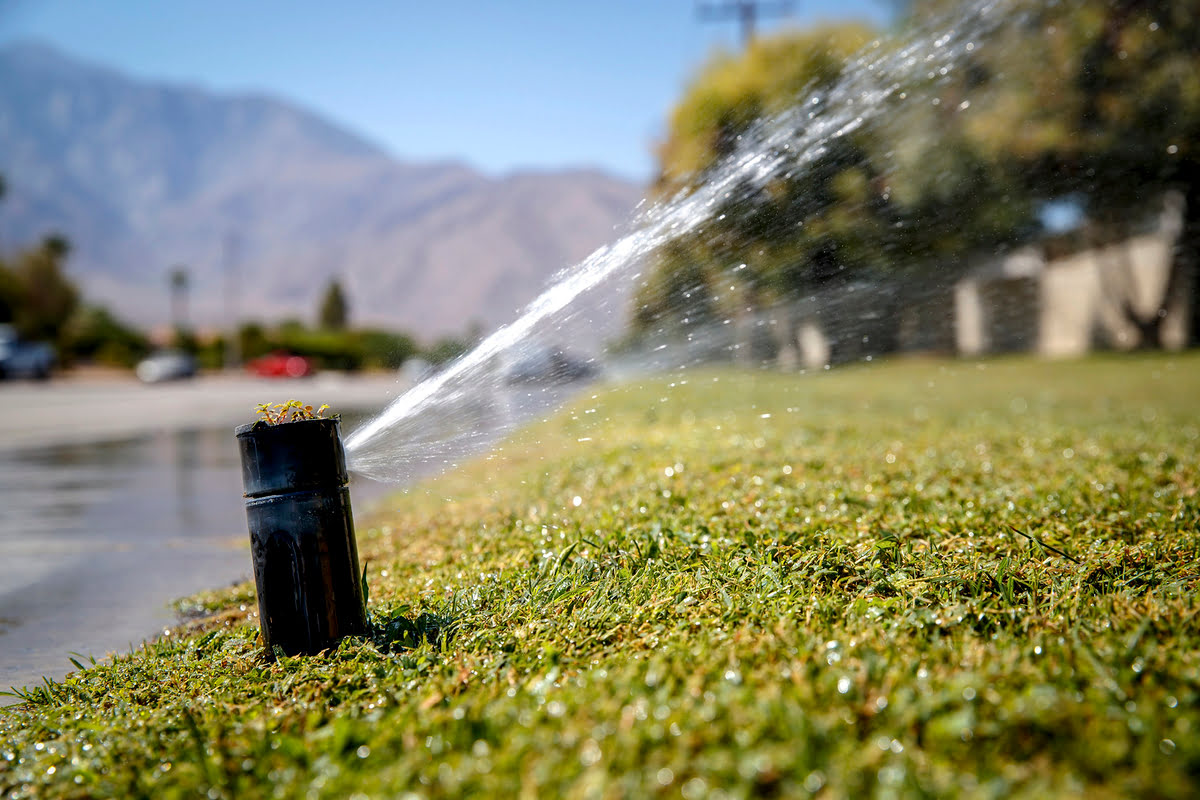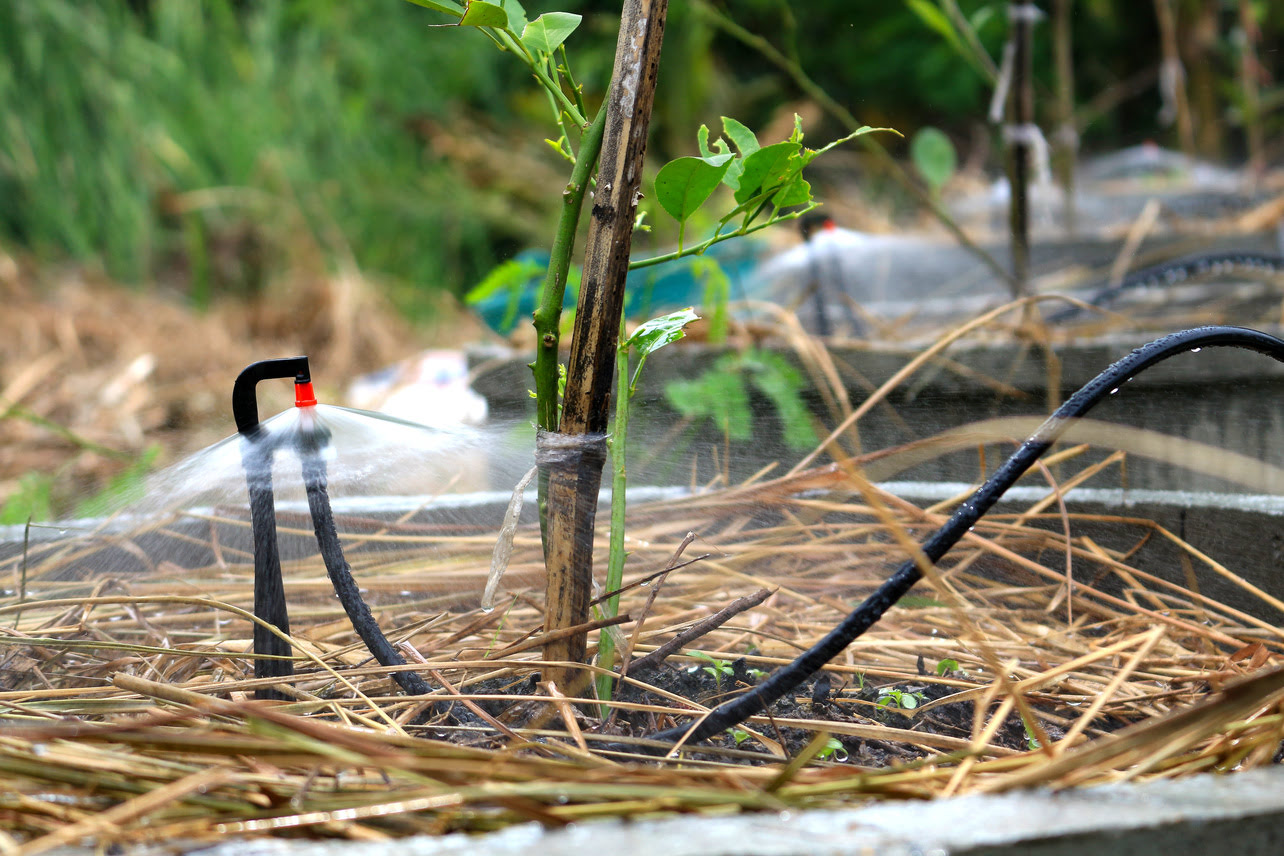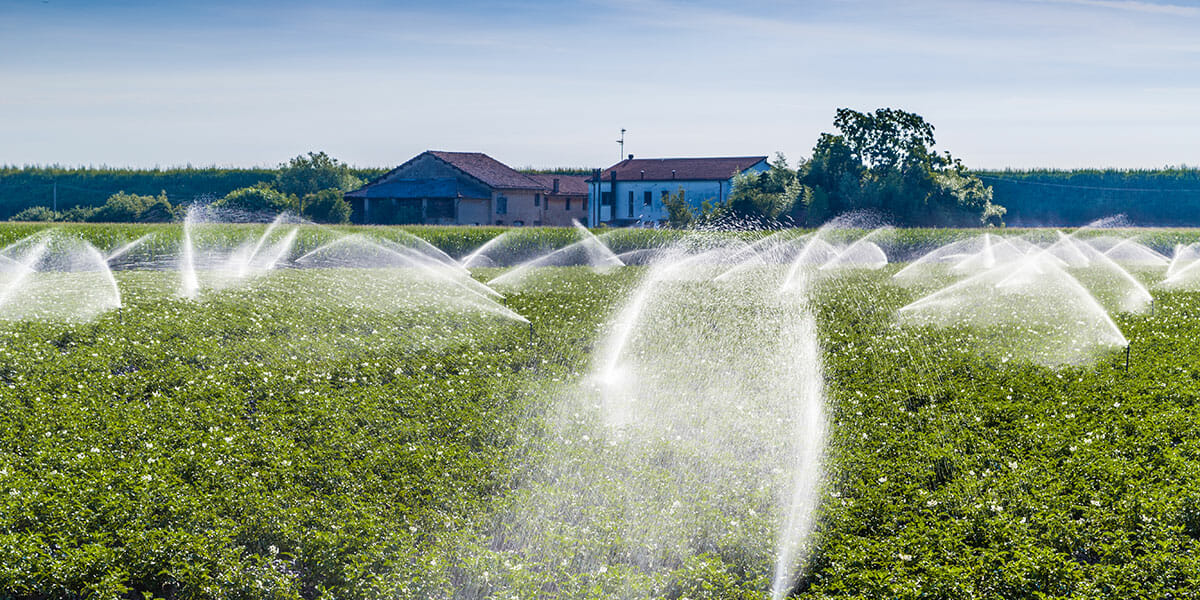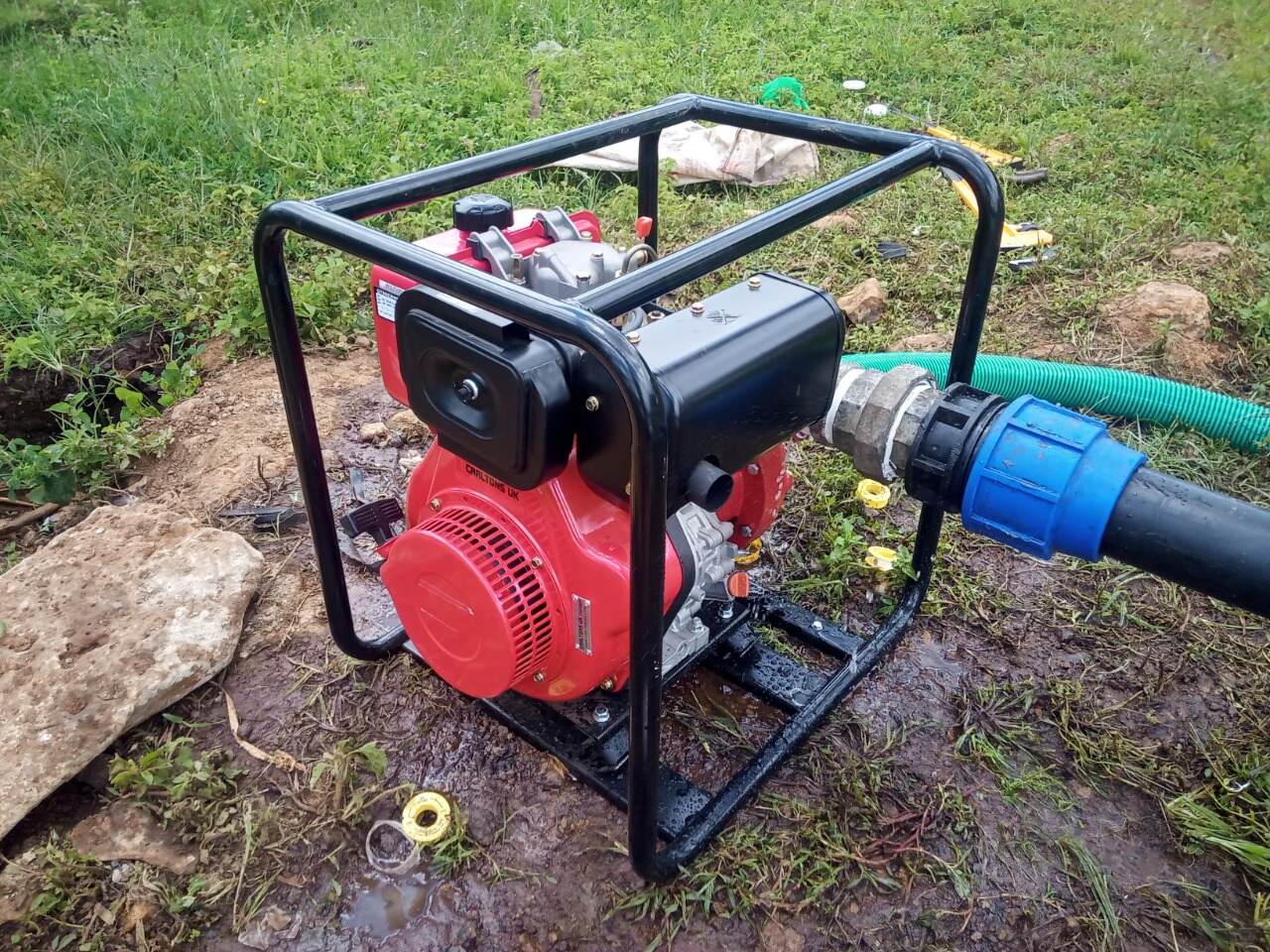Home>Gardening News and Trends>Latest News>Which Sea Has Shrunk Greatly Because Of Water Loss From Irrigation?


Latest News
Which Sea Has Shrunk Greatly Because Of Water Loss From Irrigation?
Published: November 19, 2023
Find out the Latest News on the sea that has dramatically shrunk due to excessive water loss from irrigation. Get updates on this environmental concern and its impact.
(Many of the links in this article redirect to a specific reviewed product. Your purchase of these products through affiliate links helps to generate commission for Chicagolandgardening.com, at no extra cost. Learn more)
Table of Contents
Introduction
Water is a precious resource that sustains life on Earth. From providing hydration to supporting agriculture and industry, water plays a crucial role in various sectors of our society. However, due to human activities such as irrigation, the availability of water in some regions is becoming increasingly scarce. This scarcity is not only impacting freshwater sources but also leading to the shrinkage of seas and other bodies of water.
In this article, we will explore the phenomenon of water loss from irrigation and its significant impact on the shrinking of seas. We will examine the factors contributing to this water loss, understand its consequences on the environment and wildlife, and discuss potential mitigation measures to address this issue.
Water loss from irrigation occurs when excessive amounts of water are used in agricultural practices, leading to the depletion of water sources. This excessive water usage often surpasses the natural replenishment rate, causing significant imbalances in the ecosystem. As a result, many bodies of water, including seas, rivers, and lakes, are experiencing a reduction in their volume.
The purpose of irrigation is to provide water for crop cultivation, ensuring food security and supporting the agricultural industry. However, inefficiencies in irrigation systems and unsustainable water practices have led to excessive water consumption, negatively impacting both the availability of water for other purposes and the environment.
As we delve into this issue, we will explore the different factors that contribute to water loss in irrigation. These factors include outdated or inefficient irrigation techniques, lack of water management strategies, and the over-extraction of groundwater. Additionally, climate change and increasing temperatures are exacerbating the problem by intensifying the demand for irrigation and accelerating water evaporation rates.
The shrinking of seas due to water loss from irrigation has grave consequences for the environment. As the volume of water decreases, the salinity levels rise, negatively affecting aquatic ecosystems and biodiversity. The loss of habitat for marine life and the disruption of migratory patterns of various species further amplify the ecological impact.
In the following sections, we will delve into specific case studies showcasing the shrinkage of seas caused by water loss from irrigation. We will examine the effects of sea shrinkage on the environment as well as potential mitigation measures that can help alleviate this issue. By understanding the causes and consequences of water loss from irrigation, we can work towards sustainable solutions and ensure the preservation of our seas for generations to come.
Overview of water loss from irrigation
Water loss from irrigation is a significant issue that has far-reaching consequences for both the environment and human society. Irrigation is an essential practice in agriculture, allowing farmers to provide water directly to crops and increase agricultural productivity. However, inefficient irrigation methods and unsustainable water practices result in excessive water consumption and subsequent water loss.
Multiple factors contribute to water loss in irrigation. One prominent factor is the use of outdated or inefficient irrigation techniques. Traditional flood irrigation, for example, involves flooding fields with water, leading to significant evaporation and runoff. This method often leads to unnecessary water wastage and contributes to the depletion of water sources.
Lack of proper water management strategies also plays a crucial role in water loss from irrigation. Without effective measures in place to monitor and regulate water usage, farmers may over-irrigate their fields, using more water than necessary. Insufficient infrastructure, such as outdated irrigation systems and leaky pipes, further exacerbates the problem, resulting in water loss.
Moreover, the over-extraction of groundwater for irrigation purposes poses a significant threat to water availability. Many regions heavily rely on groundwater as a water source for irrigation, but excessive pumping can deplete underground aquifers, causing a decline in water levels. This unsustainable water practice not only leads to water loss but also contributes to land subsidence and saltwater intrusion in coastal areas.
Climate change also exacerbates water loss from irrigation. Rising temperatures and changing precipitation patterns increase the demand for irrigation water, as crops require more water to combat the effects of heat and drought. Additionally, higher temperatures accelerate water evaporation rates, further reducing the water available for irrigation.
The consequences of water loss from irrigation are manifold. Beyond the immediate impacts on water availability for agriculture, excessive water consumption contributes to water scarcity in regions already prone to water stress. This can have severe implications for food security, as water scarcity hinders crop production and reduces yields.
Furthermore, the depletion of water sources due to water loss from irrigation leads to the shrinking of seas, rivers, and lakes. As the volume of water decreases, the salinity levels rise, negatively affecting aquatic ecosystems and biodiversity. Loss of habitat for marine life and disruption of migratory patterns further contribute to the ecological impact.
In the following sections, we will explore specific case studies that highlight the shrinkage of seas caused by water loss from irrigation. We will delve into the environmental implications of sea shrinkage and discuss potential mitigation measures to address this issue. By understanding the overview of water loss from irrigation, we can work towards more sustainable and efficient irrigation practices that preserve our water resources for future generations.
Factors contributing to water loss in irrigation
Water loss in irrigation is a complex issue influenced by various factors that contribute to excessive water consumption and inefficient practices. Understanding these factors is crucial in addressing the problem and promoting sustainable water management in agriculture. Below are the key factors contributing to water loss in irrigation:
- Outdated or inefficient irrigation techniques: Traditional flood irrigation methods, such as furrow and border irrigation, often result in significant water loss due to evaporation and runoff. These techniques flood fields with water, leading to unnecessary wastage. More modern and efficient irrigation methods, such as drip irrigation or precision sprinklers, can minimize water loss by delivering water directly to the roots of plants.
- Lack of water management strategies: Inadequate planning and implementation of water management strategies contribute to water loss in irrigation. Without proper monitoring and regulation of water usage, farmers may over-irrigate their fields, using more water than necessary. Implementing water-saving practices and technologies, such as soil moisture sensors and automated irrigation systems, can help optimize water usage.
- Over-extraction of groundwater: Many agricultural regions heavily rely on groundwater for irrigation. However, excessive pumping of groundwater can deplete aquifers, causing water levels to decline. This not only leads to water loss but also poses a long-term threat to water availability. Implementing sustainable groundwater management practices, such as aquifer recharge and controlled pumping, can help mitigate water loss from irrigation.
- Leaky irrigation systems: Inefficient irrigation infrastructure, such as aged pipes, valves, and sprinklers, can result in significant water loss through leaks and inefficient water distribution. Regular maintenance and repair of irrigation systems are essential to prevent leaks and optimize water usage.
- Climate change: The impacts of climate change, such as rising temperatures and changing precipitation patterns, exacerbate water loss in irrigation. Higher temperatures increase water evaporation rates, leading to increased water demand for irrigation. Erratic rainfall patterns and more frequent droughts further stress water resources, necessitating additional irrigation. Adapting irrigation practices to climate change, such as adjusting watering schedules and using drought-tolerant crops, can help reduce water loss.
It is important to note that these factors are interconnected and can compound the issue of water loss in irrigation. Implementing a holistic approach that addresses these factors is essential for promoting sustainable irrigation practices and conserving water resources.
In the following sections, we will explore the impact of water loss on the shrinking of seas and discuss specific case studies to illustrate the extent of this issue. By understanding the factors contributing to water loss in irrigation, we can develop effective strategies and technologies to mitigate this problem and ensure a more sustainable future for agriculture and the environment.
Impact of water loss on the shrinking of seas
The ongoing water loss from irrigation has significant implications for the shrinking of seas worldwide. As excessive amounts of water are used for irrigation, the overall volume of water in rivers, lakes, and even seas decreases. This reduction in water availability leads to several detrimental effects on the environment, ecosystems, and human populations. Let’s explore the impacts of water loss on the shrinking of seas:
- Decreased water inflow: Water loss from irrigation reduces the amount of water flowing into seas through rivers and other tributaries. With decreased inflow, the replenishment of seawater is significantly diminished, leading to a decline in water levels.
- Rising salinity levels: As the volume of water decreases, the concentration of salts and minerals in seawater increases. This rise in salinity poses a threat to marine life, particularly species adapted to specific salinity levels. The elevated salinity levels can disrupt the delicate balance of marine ecosystems, affecting the survival and reproduction of numerous organisms.
- Impact on aquatic ecosystems: Shrinking seas caused by water loss from irrigation can lead to the loss and degradation of important aquatic habitats. As water levels decrease, vital habitats such as wetlands and coastal areas experience changes in water quality, temperature, and salinity. These changes disrupt the intricate food webs and ecological processes that sustain marine life.
- Disruption of migration patterns: Many marine species rely on specific sea areas for their migration patterns and breeding cycles. The shrinking of seas disrupts these natural patterns, causing displacement and potential loss of important breeding grounds. This disruption can have long-lasting effects on populations, endangering certain species and further impacting the overall balance of marine ecosystems.
- Threat to coastal communities: Coastal communities often depend on seas for their livelihoods, whether through fishing, tourism, or other marine-related industries. The shrinking of seas can have severe economic consequences for these communities, causing declines in fish stocks, coastal erosion, and decreased attractiveness for tourists. This, in turn, can lead to economic hardship and social challenges for coastal populations.
The impact of water loss on the shrinking of seas extends beyond ecological and economic aspects, affecting our global climate as well. Oceans play a crucial role in regulating temperature and climate patterns through various processes, including heat absorption and the release of moisture into the atmosphere. The shrinking of seas disrupts these natural mechanisms, potentially contributing to imbalances in regional and global weather patterns.
Addressing water loss from irrigation and its impact on the shrinking of seas requires concerted efforts from governments, communities, and individuals. Implementing sustainable irrigation practices that optimize water usage, promoting water-wise agricultural techniques, and investing in water management and conservation are crucial steps towards mitigating these impacts and preserving our seas.
In the following sections, we will explore specific case studies highlighting the shrinkage of seas caused by water loss from irrigation. These cases will illustrate the real-world consequences of water loss on the environment, further emphasizing the urgency and importance of sustainable water management practices.
Case study: Mediterranean Sea
The Mediterranean Sea, a body of water known for its rich biodiversity and cultural significance, is experiencing the consequences of water loss from irrigation. The combination of unsustainable farming practices, climate change, and increasing water demand has led to the shrinkage of this iconic sea. Let’s explore the case study of the Mediterranean Sea and its challenges:
The Mediterranean region is heavily reliant on irrigation for agriculture, particularly in countries such as Spain, Italy, Greece, and Turkey. Over the years, inefficient irrigation practices and excessive water consumption have contributed to the depletion of water sources that feed into the Mediterranean Sea.
One of the major contributing factors to the shrinkage of the Mediterranean Sea is the over-extraction of groundwater for irrigation. Groundwater serves as a vital source of freshwater for agriculture and human consumption in the region. However, unsustainable pumping rates have caused aquifers to decline, resulting in reduced water inflow into the sea.
Climate change intensifies the challenges faced by the Mediterranean Sea. Rising temperatures and changing precipitation patterns lead to increased water demand for irrigation, while also accelerating evaporation rates. These changes result in a higher water deficit and further contribute to the shrinking of the sea.
The consequences of the Mediterranean Sea’s shrinkage extend beyond its ecological impact. Coastal communities heavily rely on the sea for fishing and tourism, which are significant economic sectors. The decline in water levels affects fish populations, threatening the livelihoods of fishermen. Additionally, coastal erosion and loss of beach areas can negatively impact tourism, leading to economic strain for these communities.
The environmental consequences of the shrinking Mediterranean Sea are also severe. The rise in salinity levels disrupts the delicate balance of marine ecosystems, affecting the abundance and distribution of species. Coral reefs, seagrass meadows, and other coastal habitats suffer from the reduced water volume, damaging important nursery grounds for marine life.
Recognizing the importance of addressing the issue, initiatives have been launched to promote sustainable water management in the Mediterranean region. These initiatives focus on improving irrigation efficiency, implementing water-saving technologies, and promoting the use of alternative water sources, such as treated wastewater. The aim is to reduce water loss from irrigation and alleviate the pressure on the Mediterranean Sea.
Efforts are also being made to raise awareness and engage stakeholders in sustainable water practices. Public-private partnerships, research collaborations, and policy interventions aim to create a more holistic approach to water management, taking into account the ecological, economic, and social aspects of the Mediterranean Sea.
The case of the Mediterranean Sea highlights the urgent need for sustainable irrigation practices and water management strategies. By addressing the factors that contribute to water loss, such as inefficient irrigation techniques and over-extraction of groundwater, we can work towards preserving this iconic sea and ensuring the sustainability of the region’s ecosystems and livelihoods.
Effects of sea shrinkage on the environment
The shrinkage of seas, caused by water loss from irrigation and other factors, has significant consequences for the environment. As bodies of water decrease in size, several environmental effects become more pronounced. Let’s explore the effects of sea shrinkage on the environment:
- Loss of habitats: Sea shrinkage leads to the loss of critical habitats for various marine species. Coastal areas, wetlands, and shallow waters provide essential breeding, feeding, and nesting grounds for marine organisms. As these areas reduce in size, the availability of suitable habitat diminishes, negatively impacting the survival and reproduction of many species.
- Disruption of ecosystems: Shrinking seas disrupt the delicate balance of marine ecosystems. Changes in water conditions, such as increased salinity and temperature fluctuations, can have profound effects on the species composition and distribution. This disruption can lead to the decline or loss of certain species, disrupt food chains, and alter the overall biodiversity and functioning of the ecosystem.
- Threat to migratory species: Many migratory species, such as birds, sea turtles, and fish, rely on specific seas and coastal areas for feeding, breeding, and resting during their migration. Sea shrinkage can disrupt these migration patterns, causing a loss of important stopover sites and impacting the survival of these species.
- Changes in water quality: The reduction in water volume can lead to changes in water quality, such as increased salinity and concentration of pollutants. Elevated salinity can negatively impact the survival of sensitive marine species and disrupt their reproductive cycles. The accumulation of pollutants due to reduced water circulation can further degrade water quality, causing harm to marine life and ecosystems.
- Loss of ecosystem services: Seas provide a range of ecosystem services that benefit human populations, such as coastal protection, carbon sequestration, and climate regulation. As seas shrink, their ability to provide these services diminishes. Coastal communities may be more vulnerable to extreme weather events, and the loss of carbon sinks can contribute to climate change impacts.
The effects of sea shrinkage on the environment have far-reaching implications for the overall health and functioning of marine ecosystems. The loss of habitats, disruption of ecosystems, and changes in water quality can lead to a decline in biodiversity and ecosystem resilience. These impacts can have cascading effects on the fishing industry, tourism, and the overall sustainability of coastal communities.
Addressing the root causes of water loss from irrigation and implementing sustainable water management practices are crucial steps in mitigating the effects of sea shrinkage. By optimizing irrigation techniques, conserving water resources, and promoting ecosystem-friendly practices, we can help preserve the integrity of our seas and ensure the continued health of marine ecosystems.
In the next section, we will explore mitigation measures to reduce water loss in irrigation. These measures aim to address the factors contributing to sea shrinkage and provide sustainable solutions to promote the well-being of our environment and future generations.
Mitigation measures to reduce water loss in irrigation
Addressing water loss in irrigation is crucial for promoting sustainable water management practices and reducing the shrinking of seas and other bodies of water. Various mitigation measures can be implemented to optimize water use in agriculture and minimize water loss. Let’s explore some key strategies:
- Improving irrigation efficiency: Upgrading irrigation systems to more efficient technologies, such as drip irrigation and precision sprinklers, can significantly reduce water loss. These methods directly deliver water to the plant roots, minimizing evaporation and runoff. Additionally, regular maintenance and repair of irrigation infrastructure are essential to prevent leaks and ensure efficient water distribution.
- Implementing water-saving practices: Promoting water-saving practices among farmers, such as proper scheduling of irrigation, using mulch or cover crops to reduce evaporation, and adopting soil moisture monitoring techniques, can help optimize irrigation and minimize water waste. Additionally, promoting crop selection based on water availability, such as cultivating drought-tolerant crops, can further reduce water demands.
- Water management and planning: Developing and implementing comprehensive water management strategies is crucial to optimize water use in irrigation. This includes assessing water resources, setting water allocation priorities, and establishing regulations and permits for water use. Integrated water management approaches that consider the needs of various sectors, including agriculture, industry, and the environment, can facilitate efficient water allocation and minimize water loss.
- Promoting sustainable farming practices: Encouraging the adoption of sustainable farming techniques, such as agroforestry, organic farming, and conservation tillage, can lead to improved soil health and water retention. These practices can reduce the need for irrigation and enhance water infiltration, mitigating water loss and promoting overall ecosystem resilience.
- Exploring alternative water sources: To mitigate the depletion of freshwater sources, exploring and utilizing alternative water sources is essential. This includes the use of treated wastewater for irrigation or adopting innovative approaches like rainwater harvesting and on-farm water storage. Using alternative water sources reduces the reliance on fresh water, conserving resources and minimizing the overall impact on water availability.
Furthermore, raising awareness among farmers and communities about the importance of water conservation and sustainable practices is vital. Providing education and training on efficient irrigation techniques, proper water management, and the benefits of water conservation can encourage widespread adoption of these mitigation measures.
Government policies and incentives play a crucial role in promoting sustainable water management. Implementing regulations, providing financial incentives, and supporting research and development for water-efficient technologies can encourage farmers to adopt sustainable irrigation practices.
By implementing these mitigation measures, we can reduce water loss in irrigation, promote sustainable water management practices, and mitigate the shrinking of seas. Through collaborative efforts between stakeholders, including farmers, policymakers, researchers, and communities, we can ensure the preservation of our precious water resources and the long-term sustainability of our ecosystems.
Conclusion
The shrinkage of seas due to water loss from irrigation is a pressing environmental issue that requires immediate attention. The excessive consumption and inefficient use of water in agriculture contribute to the depletion of water sources, resulting in the diminished volume of seas and other bodies of water. This phenomenon poses significant consequences for the environment, ecosystems, and coastal communities.
The factors contributing to water loss in irrigation, such as outdated techniques, lack of water management strategies, over-extraction of groundwater, and climate change, must be addressed to mitigate the shrinking of seas. By implementing sustainable irrigation practices and optimizing water use, we can reduce water loss and ensure the long-term availability of water resources.
The impact of sea shrinkage on the environment is wide-ranging, affecting habitats, ecosystems, and migratory patterns of various species. Disruptions in ecosystems and changes in water quality further compound the negative effects. Coastal communities also face economic and social challenges due to the decline in fishing and tourism opportunities.
To address the issue, mitigation measures such as improving irrigation efficiency, implementing water-saving practices, promoting sustainable farming techniques, and exploring alternative water sources are essential. Integrated water management approaches and the involvement of stakeholders, including farmers, policymakers, and researchers, are crucial for creating sustainable water practices and conserving our seas.
It is paramount that governments, communities, and individuals work together to prioritize sustainable water management and conservation efforts. Raising awareness, providing education, and implementing policies and incentives can help drive the adoption of these practices across agricultural sectors.
By implementing these measures, we can mitigate the shrinkage of seas, preserve marine ecosystems, and ensure the availability of water resources for future generations. To safeguard our environment and promote a sustainable future, it is essential that we take action now to address water loss in irrigation and protect the health and vitality of our seas.






